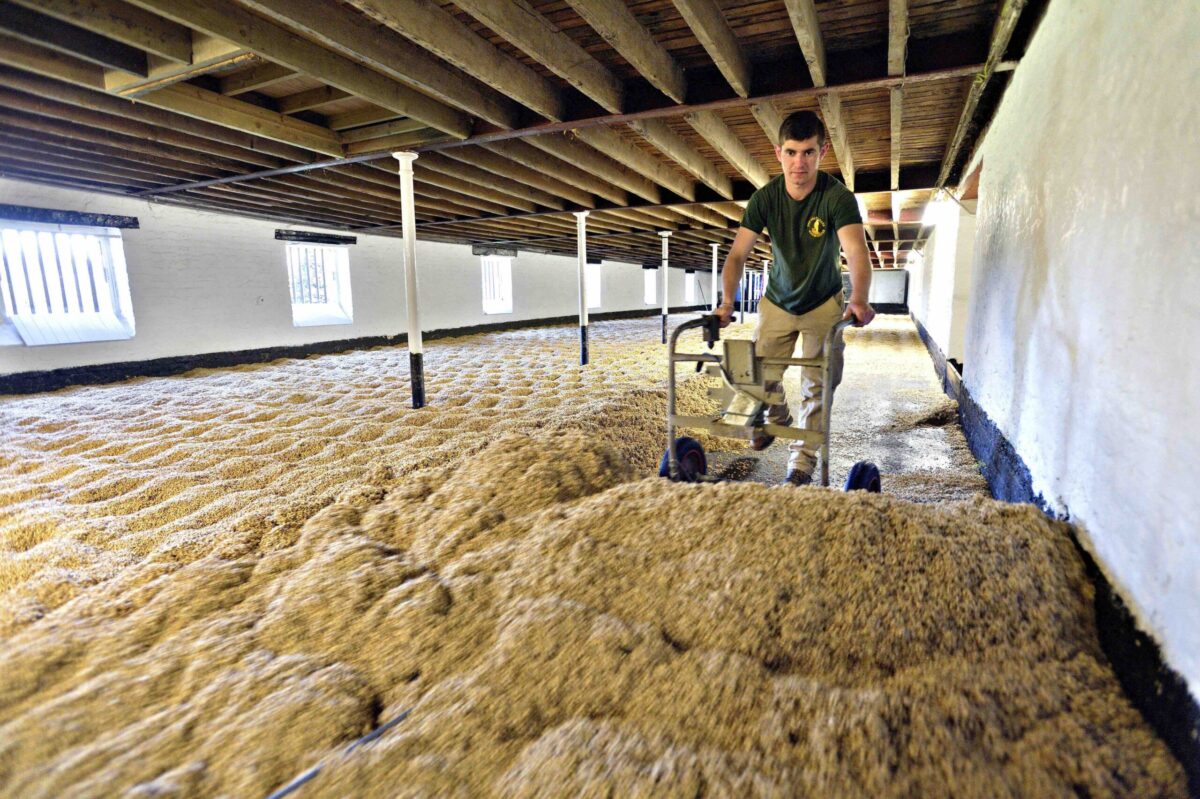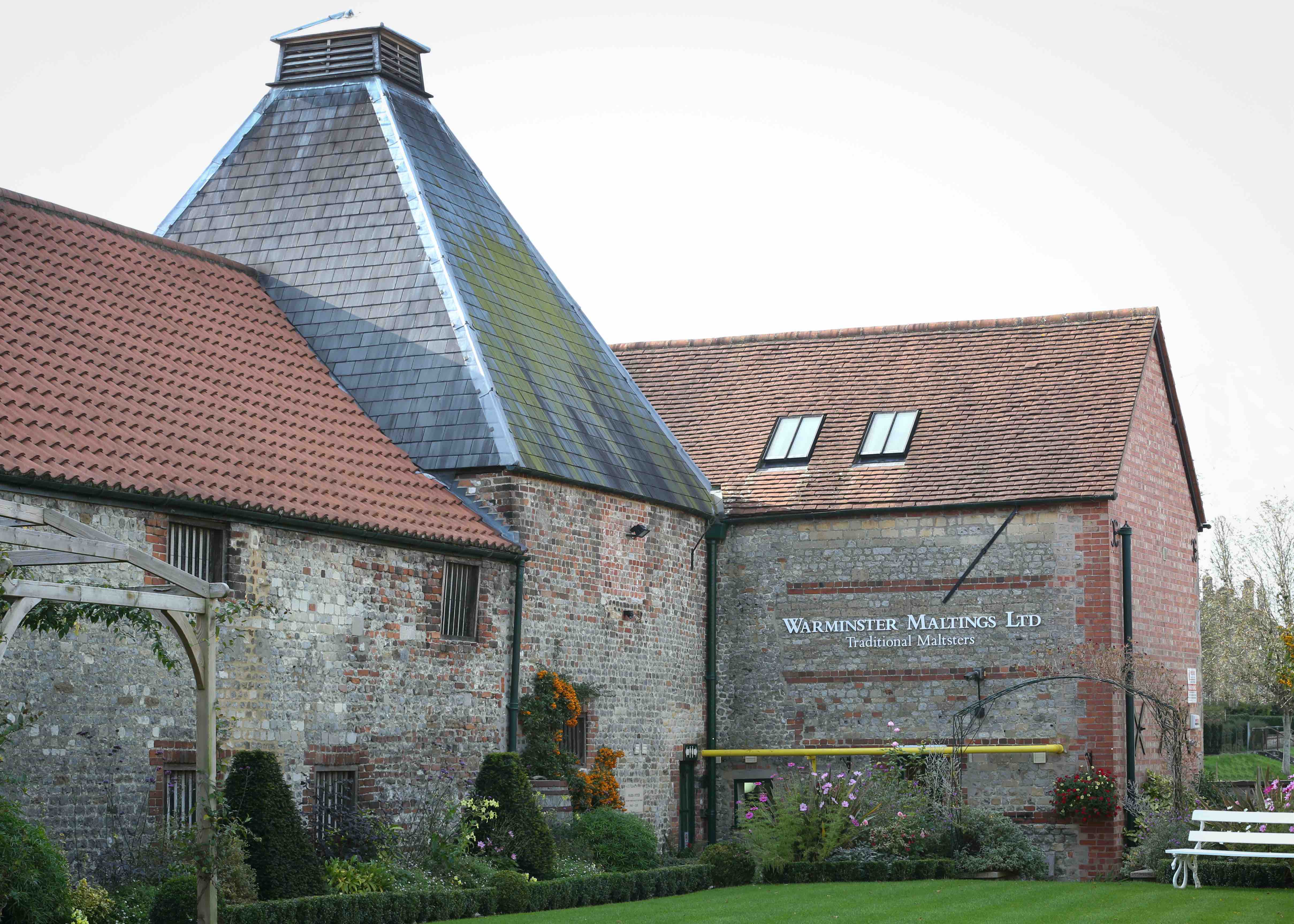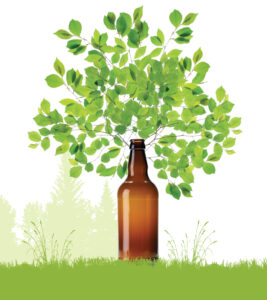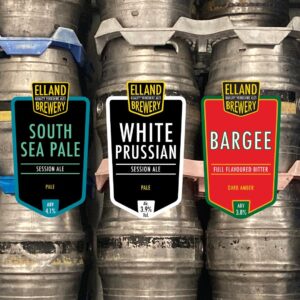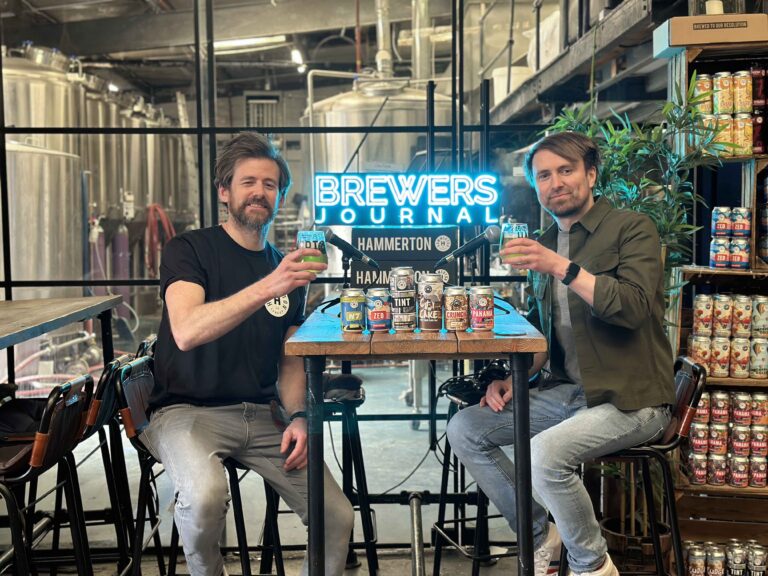For Robin Appel, who leads the team at Warminster Maltings, Maris Otter is simply the brewers’ favourite. In this article he outlines its qualities and why, when it comes to flavour, you can’t beat ‘floor made’ malt.
Warminster Maltings is Britain’s oldest working Maltings, and the only ‘stand alone’ floor maltings left in the U.K. industry. It is the smallest member of the Maltsters Association of Great Britain (MAGB), and by some, as far as most of the MAGB membership is concerned.
The point is, it lacks the economies of scale that the high volume pneumatic malting process delivers, and the higher production costs it has to shoulder have to be reflected in its price List.
So our customers need to get more ‘bangs for their bucks’, so to speak. And based on our order book, and feedback, that is exactly what they are getting. What are we talking about? Well, we are talking about higher extracts, and enhanced flavour, within the white malts.
To deal with these points in turn, beginning with ‘extract’, malting is basically a simple process, but a very precise procedure. Individual small batch production at Warminster – 10 tonnes barley/8 tonnes of malt – enables precision. There is no blueprint for our procedures on the floors. Every time our maltsters complete an intervention, before they walk away, they have to ask themselves what do I need to do next, and when do I do it?.
Provided the barley is top quality, then there is absolutely no excuse for Warminster’s scale of production not delivering the optimum extract in the brew house. Feed back from customers confirms this, with one customer even ‘complaining’ on one occasion of having more beer than containers to put the beer into!
But the other attribute which makes Warminster Malt stand apart is flavour. We call this ‘enhanced flavour’ because all barleys have flavour, with the venerable Maris Otter being the brewers favourite. The ‘enhanced flavour’ can be attributed to two things, firstly the slower, gentler process on the floors, and secondly an interaction between the natural yeasts in the 165 year old malthouse and the ‘green malt’. You might refer to it as Warminster’s DNA.
So why is Maris Otter the brewers favourite? The answer is quite simple: no barley variety since, and we are talking since 1965, has come close to replicating the very clean, and malty/biscuity flavours of ‘Otter. Is there a reason for this? “Yes: barley breeders are not selecting new varieties for their flavour, it is not in their remit!”
This all stems from the Plant Varieties and Seeds Act of 1964, which established the rights of barley breeders to claim Royalties from new varieties when they are commercialised. When it was debated who should pay these Royalties, it was deemed that the payment should come from the biggest beneficiary i.e the farmers.
This ultimately completely contradicts basic Adam Smith economics that states “the object of economic activity is not production, it is consumption”! So barley breeders, for the last 60 years, have been breeding, first and foremost, for farmers and production. Understandably, top of their list of improvements from new varieties is always more yield of grain, followed by foliar disease resistance, stiffness of straw, earliness of ripening etc etc with malting and brewing quality almost an attribute by chance.
What it all boils down to, the malting and brewing industry has to screen all new barley varieties, setting their own benchmarks for the quality traits they seek. Despite one or two notable mistakes along the way, maltsters and brewers have performed this task particularly well, at least as far as what they have been looking for is concerned. However, despite the extraordinary success of Maris Otter barley over the last 30 years, what maltsters and brewers have been looking for has not included flavour!
Forever, brewers preferred to believe that all barleys taste the same. That suited them when new varieties came along, and it suited maltsters who need to sometimes blend two or more varieties to achieve brewers specifications. So that was the industry mantra, right up to 2006, when I (whose grain company Robin Appel Ltd, owns the production and marketing rights to Maris Otter) approached the Brewing Research Foundation, at Nutfield in Surrey. Robin wanted to prove that the flavour of Maris Otter was much more pronounced than other varieties.
The tasting panel did not like Tipple at all! Yet Tipple was about to dominate malting barley production across the U.K. for the next 5 years, Robin Appel
A project was launched, jointly funded by Robin Appel Ltd and the Home Grown Cereals Authority. Eight different barley varieties were compared by professional tasting panels, firstly as a porridge made from the malts, then as a standard pale ale. The Brewing Research Foundation had never done this work before, and the results were a revelation.
Maris Otter, as expected, stood out from the rest, but what was astonishing was that the then new Spring barley variety Tipple displayed “bitter and astringent flavours” that came through to the beer. The tasting panel did not like Tipple at all! Yet Tipple was about to dominate malting barley production across the U.K. for the next 5 years.
Without adding flavour profiling to their screening process, the malting and brewing industry could easily repeat the selection of a variety with unsuitable flavour traits. Why would craft brewers want to be presented with a malt that delivers that sort of handicap?
But barley flavour is not just about the genetics. We now have peer reviewed research that tells us barley flavour can be influenced by “terroir”! A study has shown that soil, microclimate, and topography can influence barley growth, which in turn can, in this particular case, influence the flavour of whisky.
Forever, farmers on the north Norfolk coast have maintained the quality of their barley is enhanced by the “sea frets” (sea mists), presumably by tempering the heat from the sun in high summer. Would this also impact the flavour of the barley? It is more likely the underlying rock and mineral content of the soil which would make the most difference.
Barley is best suited to a soil type described as the Icknield Series, a light loam over chalk. This soil type stretches all the way down from East Yorkshire to the Jurassic Coast in Dorset, and every year provides the most reliable bulk of the U.K.‘s annual barley crop. But within those areas, micro climate and topography can obviously vary. But none of this would necessarily be replicated from year to year.
So, when it comes to barley flavour, what we are really talking about is the expression from individual varieties, whether it is positive, as in the case of Maris Otter, mild or benign, or negative as in the case of Tipple. From the tests that Robin has done – he repeated the 2006 trial again in 2007, and has commissioned further trials since – most barley varieties wallow around the ‘mild or benign’ category, and only a variety named Westminster got anywhere close to Maris Otter, but that has long since come and gone.
If the flavour of barley matters, then selecting for it needs to start with the breeders. But why would breeders respond all the time their paymaster is the farmer? This is a debate that I am keen to stir up. Sitting with my sales managers hat on, flavour is nearly all I talk about with both existing customers and new enquiries.
With nothing new coming from the barley breeders, I have a whole raft of customers who have chosen, instead, to turn back to heritage varieties. At Warminster we have Plumage Archer of course, the first genetically true variety of barley in the world, bred at Warminster, in 1905. That has plenty of flavour. But so do a number of the landrace varieties that preceded it. But none of this sounds progressive, particularly in the light of the challenges currently facing farming.
So you need floor malting. We are not the only one, of course, and at least one of the others has done comparisons, you definitely get more flavour out of ‘floor made’ malt! And all the time that includes higher extracts, we calculate our slightly higher malt prices probably deliver the best value for money of any malts on the market!

